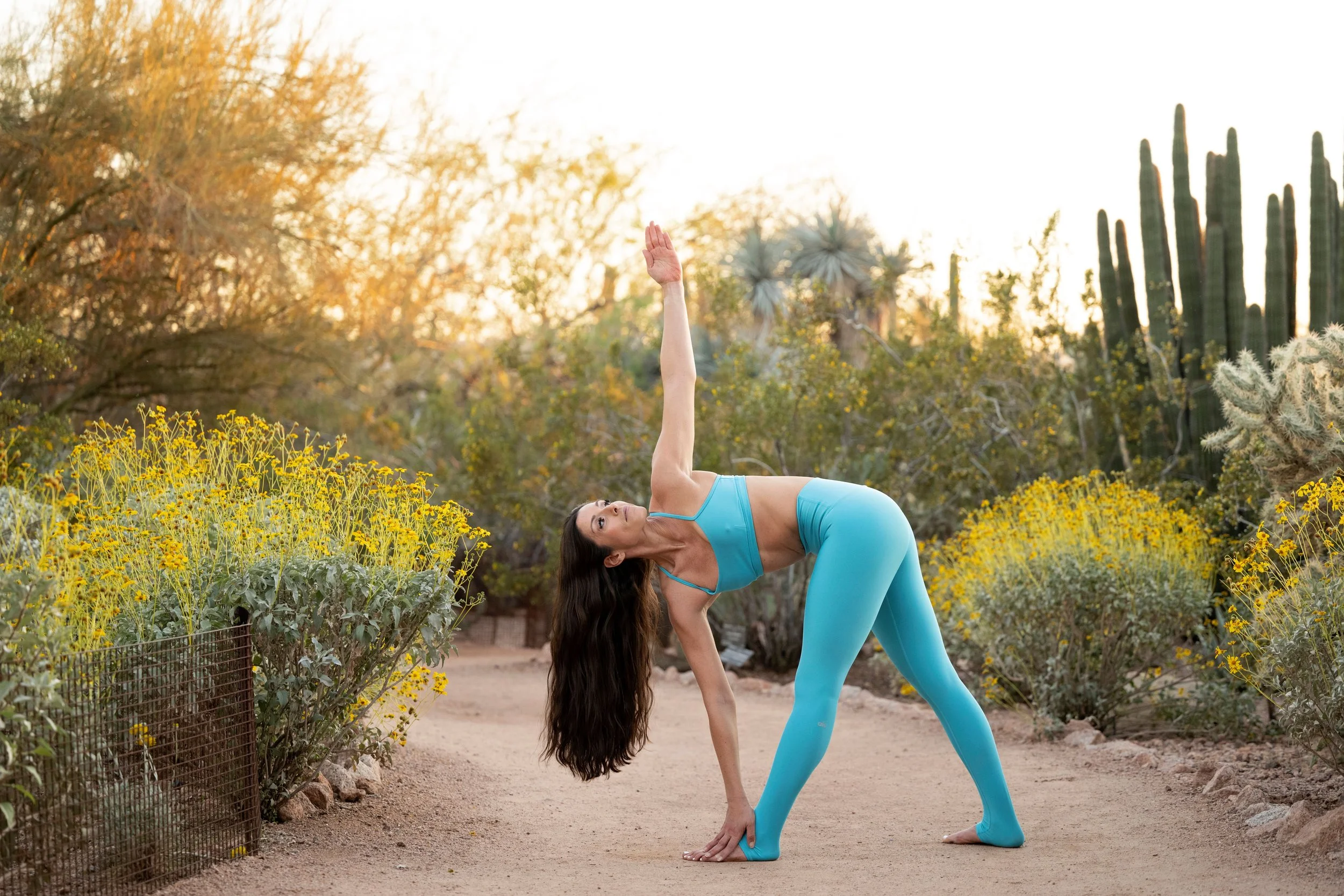What Is Hot Yoga? Benefits, Heat Levels & Safety Tips
Hot yoga isn’t just a workout—it’s a sweat-drenched experience that pushes your body and clears your mind. Practised in a heated room, it blends traditional yoga poses with a detoxifying twist. The high temperature helps loosen muscles, improve flexibility, and boost endurance. But it’s not just about the heat. Hot yoga can reduce stress, support weight loss, and build serious mental resilience. Whether you're new to yoga or looking for a challenge, this style offers something different. Curious about what actually happens in a hot yoga class? Let’s break it down—what it is, how it works, and whether it’s right for you.
Key Takeaways
Hot yoga is practised in rooms heated to 90–105°F.
Increases flexibility, sweat detox, and calorie burn.
Popular types: Hot Vinyasa, Hot Yin, Hot Hatha, and Hot Pilates.
Risks include dehydration and overheating—hydrate and pace yourself.
Not suitable for those pregnant or with heart conditions.
Ideal for those who enjoy intense, sweat-heavy workouts with mental focus.
What is Hot Yoga?
Hot yoga is a style of yoga practised in a heated room to improve flexibility, boost circulation, and increase calorie burn.
Hot yoga blends traditional poses with high heat to amplify results. It loosens muscles, encourages deep stretching, and demands mental focus. It's intense, rewarding, and unlike regular yoga.
Origins and History of Hot Yoga
The idea was simple—heat up the room, warm up the body faster, and allow for deeper stretches with less risk of injury. It quickly gained a cult-like following in Los Angeles and spread worldwide.
Over time, other styles evolved, like Hot Vinyasa and Hot Power Yoga, which kept the heat but added more fluid, creative flows. Unlike Bikram, these newer classes vary in sequence and teaching style.
Today, hot yoga is more than a trend—it’s a global movement with a loyal base. While its roots are tied to tradition, its modern forms cater to a range of fitness levels and preferences. Whether you are seeking a high-intensity workout or a serene session, incorporating morning yoga into your routine provides undeniable benefits.
Types of Hot Yoga
Hot yoga isn’t a one-size-fits-all practice. While all styles share the heat, the format, intensity, and flow can vary quite a bit. Here are some of the most common types:
Hot Vinyasa (or Power Yoga): Unlike Bikram, hot Vinyasa flows link breath to movement and change from class to class. It’s typically faster-paced and more dynamic. You’ll build strength, burn calories, and stay mentally engaged as you move through fluid sequences in a heated room (usually around 90–95°F).
Hot Yin Yoga: This is a slower, meditative style focused on deep stretches and long holds. Practised in a warm (not scorching) room, it targets fascia, joints, and connective tissue. Ideal for recovery days or stress relief.
Other variations include Hot Hatha, Hot Pilates, or even fusion styles. The key is to find a class that suits your body, goals, and mood—like joining a Hot Yoga Class Paradise Valley for a reset that challenges and energises you.
Benefits of Hot Yoga
Hot yoga offers more than just a sweat session—it delivers a full-body reset, mentally and physically. Practising in a heated room amplifies traditional yoga benefits, giving you that extra edge.
Improved Flexibility: The heat warms your muscles faster, helping you move deeper into poses without straining. Over time, this can lead to greater mobility and reduced stiffness.
Detox Through Sweat: You’ll sweat. A lot. This intense perspiration can help flush out toxins and leave your skin feeling refreshed and energised.
Cardiovascular Boost: The combination of heat and movement raises your heart rate, turning your yoga practice into a low-impact cardio workout. It can improve circulation and build endurance.
Mental Clarity & Stress Relief: Hot yoga demands focus. Between the heat, breath control, and balance, there’s no room for outside distractions. It’s a moving meditation that calms your mind and boosts mental resilience.
Burns Calories & Supports Weight Loss: Depending on the intensity and duration, hot yoga can burn anywhere from 300 to 600 calories per session. It’s a solid option for those looking to stay lean while gaining strength and flexibility.
Consistent practice can improve sleep, posture, and even mood. It’s not just about fitness—it’s about feeling good, inside and out. Choosing the best yoga outfits makes it easier to stay comfortable, focused, and confident through every session, whether you are practicing summer yoga or transitioning into cooler seasons. You'll find yourself achieving deeper poses and holding challenging balances more naturally.
Risks and Precautions
Hot yoga can be incredibly rewarding, but it’s not without risks—especially if you’re new to heated workouts.
Dehydration is a common concern. With all that sweating, it’s easy to lose fluids and electrolytes fast. Always hydrate before, during, and after class.
Overheating can lead to dizziness, nausea, or fatigue, particularly if you're pushing too hard. Listen to your body and take breaks when needed.
Hot yoga isn’t recommended for pregnant women, those with heart conditions, or anyone sensitive to heat. Always check with a doctor before starting.
Go slow, especially in your first few sessions. With the right prep and mindset, hot yoga can be both safe and transformative. A heated Yoga Class Glendale Downtown gives you the space to ease in, build confidence, and grow stronger with every practice.
What to Expect in a Hot Yoga Class
Walking into your first hot yoga class might feel a little intimidating—but knowing what to expect makes all the difference.
The room will be heated—usually between 90°F to 105°F—so you’ll feel the warmth as soon as you step in. Expect a 60 to 90-minute class, depending on the style.
You’ll start with breathwork or gentle warm-ups, then move into a sequence of standing and floor poses. In some classes like Vinyasa, the flow is dynamic and fast-paced. In others, like Yin, it’s slow and meditative.
You’ll sweat. A lot. But that’s part of the process—embrace it.
Instructors often give hands-on adjustments or verbal cues, and props like blocks or straps may be used.
It’s totally normal to rest when needed. Everyone’s focused on their own mat, so don’t worry about keeping up—just focus on your breath and your body.
What to Wear and Bring to a Hot Yoga Class
When it comes to hot yoga, less is more. Choose light, breathable, and moisture-wicking clothes—think fitted tanks, sports bras, and yoga shorts or leggings. Avoid heavy cotton, which traps sweat and heat.
You’ll definitely want a non-slip yoga mat, plus a large towel to cover it—things get slippery fast. Bring a water bottle and sip throughout the class to stay hydrated.
Some studios have showers, so pack a change of clothes and small toiletries if needed. A headband or hair tie helps keep sweat and hair out of your face.
Being prepared means you can focus less on discomfort and more on your practice.
How to Prepare for Your First Class
Hydration is key—drink plenty of water the day before and the day of your class. Avoid heavy meals at least 2–3 hours before; a light snack like fruit or nuts is enough if you're hungry.
Arrive early so you can get familiar with the space, chat with the instructor, and choose a comfortable spot in the room—ideally near the door or fan if you're heat-sensitive.
Wear breathable clothes and bring all your essentials: yoga mat, towel, and water bottle. Don’t worry about nailing every pose—just focus on your breath and listen to your body.
The first class might feel intense, but that’s normal. Stay calm, take breaks, and trust the process. If you're based nearby, checking out Yoga Classes Scottsdale can give you access to studios that really get beginner jitters. Many offer cool perks like intro specials and chill instructors who’ll walk you through the flow without the pressure.
Hot Yoga vs Regular Yoga: Key Differences
The biggest difference? The heat. Hot yoga is done in a heated room (90–105°F), while regular yoga is practised at normal room temperature. This added heat increases sweat, flexibility, and cardiovascular intensity.
Hot yoga often feels more like a workout, helping you burn more calories and push deeper into poses. Regular yoga, on the other hand, may focus more on alignment, breath, and mindfulness without the intensity of heat.
Both offer physical and mental benefits, but your experience will vary. If you love sweating it out and enjoy a challenge, hot yoga might be your vibe. Prefer a calmer, meditative flow? Regular yoga may be the better fit. Either way, it’s about finding what works best for your body and goals.
Is Hot Yoga Right for You?
Hot yoga can be a game-changer—but it’s not for everyone. If you enjoy a sweaty, high-energy workout that challenges your body and clears your mind, you’ll probably love it. It’s great for building flexibility, stamina, and focus.
However, if you’re sensitive to heat, prone to dehydration, or have heart-related conditions, it’s best to check with your doctor first. Pregnant individuals should also avoid hot environments.
Beginners are welcome, but it helps to ease in slowly and stay hydrated. Listen to your body. If you’re curious and up for the heat, give it a try—you might surprise yourself.
Final Thoughts: Should You Try Hot Yoga?
If you’re looking to shake up your fitness routine or deepen your yoga practice, hot yoga is worth exploring. It challenges your body, sharpens your focus, and leaves you feeling energised (and maybe a little drenched).
It’s not about being perfect—it’s about showing up, breathing through the heat, and pushing your limits safely. Start slow, stay hydrated, and keep an open mind. With consistency, you might just find your new favourite way to move and unwind.
FAQs About Hot Yoga
1. Can beginners do hot yoga?
Yes! Just go at your own pace, take breaks when needed, and stay hydrated.
2. How often should I practise hot yoga?
2–3 times a week is a good start. More if your body feels good and recovers well.
3. What temperature is the room?
Typically between 90°F and 105°F, depending on the class style.
4. Do I need to be flexible to start?
Not at all. Flexibility improves over time—just focus on showing up.
5. Is hot yoga safe?
Yes, for most people. But if you have health concerns or heat sensitivity, consult your doctor first.

